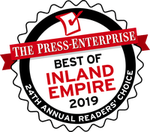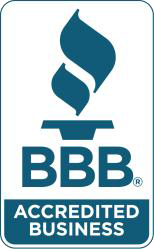
A car isn’t really an impulse purchase (unless you’re very, very wealthy). So a great deal of research is probably the first thing you do. You have a good look at things like gas mileage, price point, and customer reviews. Google is your best friend these days. It is sensible to do this amount of research. For most individuals who aren’t wealthy, it will take a long time to pay off the thousands of dollars you will spend. So you want to be certain it’s worth it!
Not only do you look at the concrete factors (gas mileage, safety, etc), but you’ll also think about best fits for your lifestyle. Is there a particular type of vehicle you really enjoy? How much room do you need for weekly groceries? How fast do you want your car to be?
Put another way, to get the most from your new car, you have to evaluate your options and make some choices. And when you’re picking out new hearing aids, it’s essential to have this same mindset. They won’t cost tens of thousands of dollars, but they are an investment. Figuring out which device will best fit your lifestyle and which device works best in general, is the best way to get the most from your investment.
The benefits of hearing aids
In just the same way that you can discuss the benefits of a car in very general terms, you can also discuss the benefits of hearing aids in a similarly broad way. Hearing aids are pretty great!
Yes, they help you hear, but for most individuals, the benefits are more tangible than that. Staying connected with your family and friends will be much easier with a good pair of hearing aids. You’ll be able to better follow conversations at the dinner table, listen to your grandkids tell you about fascinating dinosaurs, and chit-chat with the cashier at the grocery store.
With all these benefits, it seems sensible that you’d start to ask, “How can I help my hearing aids last longer?” You want to keep those benefits coming!
Do more expensive hearing aids work better?
Some individuals might assume that they can only get a quality hearing aid if they get the highest-priced device.
And, to be sure, hearing aids can be an investment. Here are a couple of reasons why some hearing aids might be costly:
- Hearing aids are made to contain very state-of-the-art technologies, and they need to make those technologies as tiny as possible. So the package you’re paying for is extremely technologically potent.
- Hearing aids are also made to last for a long time. If you take good care of them this is especially true.
But the most expensive model won’t automatically be your best fit or work the best. How severe your hearing loss is and, of course, your budget are a couple of the variables to think about. Some hearing aids will certainly last longer than others. But the cost of the device isn’t always the deciding variable.
In order to keep your hearing aids in good working condition, as with any other investment, they will call for regular care and maintenance. What’s more, your hearing aids will have to be tuned to your ears and adjusted for your specific level of hearing loss.
Get the correct hearing aids for your hearing loss
What options do you have? When it comes to hearing aids, you’ll have a number of different styles and kinds to pick from. You can work with us to determine which ones are best for you and your hearing goals. Here are the options you will have to pick from:
- Completely-in-the-Canal Hearing Aids (CIC): These types of hearing aids can deliver high-quality sound and are usually quite discrete (perfect for people who want to hide their hearing aids). But with this type of hearing aid, battery life, and overall lifespan is usually shorter. And some of the most state-of-the-art features are usually missing due to their smaller size.
- In-the-Canal Hearing Aids (ITC): These hearing aids are custom molded to fit your ear canal, which makes them mostly discrete. They will often contain more high-tech functions being a bit bigger than CIC models. These devices are still pretty small and some of the features can be a bit difficult to manipulate by hand. Even still, ITC models are great for individuals who need more features but still want to be discreet.
- In-the-Ear Hearing Aids: This style of hearing aid is molded to fit completely in your outer ear. A “half shell” version fits in your lower ear and a “full shell” version fits totally inside your ear. If you have complex hearing issues or need more powerful noise control, the more advanced technology and larger microphones will make these hearing aids a great option.
- Behind-the-Ear Hearing Aids (BTE): The speaker of this device sits in your ear and the more bulky electronic part sits behind your ear making them the best of both worlds in a way. The pieces are connected by a little tube, but for the most part, it’s fairly non-visible. These hearing aids provide many amplification solutions making them quite popular. These types are a good compromise between visibility and power.
- Receiving-in-the-Canal (or in the Ear) Hearing Aids (RIC or RITE): With this model, the speaker part sits in the ear canal but they are otherwise a lot like BTE models. They have the benefit of decreasing wind noise and are usually less visible.
- Open-Fit Hearing Aids: Even when you’re wearing the device, low-frequency sounds can still get into the ear. If you have problems hearing higher frequencies but low-frequencies aren’t really a problem, these hearing aids will be a good fit for you. Though it works well for many people, it won’t be a good option for everyone.
What about over-the-counter hearing aids?
Over-the-counter hearing aids (or OTC hearing aids, to keep flooding you with acronyms) are yet another option to think about. The problem is that OTC hearing aids are sort of like OTC medications, they work okay in a basic way. But if your hearing loss calls for a set of more powerful hearing aids or more specialized hearing aids, OTC devices could fall somewhat short. Generally, OTC hearing aids can’t be specially programmed to your hearing like prescription hearing aids can.
Regardless of what type of hearing aid you choose to buy, it’s always a good plan to consult us about what might work best for your specific requirements.
Repair and maintenance
Of course, once you’ve taken all of the steps to select your perfect hearing aid type, you need to take care of it. This is, again, like a car which also requires maintenance.
So, now you’re thinking: how often should my hearing aids be checked? You should have your hearing aid cleaned and properly maintained every six months to a year. This gives you a chance to be sure everything’s working properly and as it should!
You should also become familiar with your warranty. You will save some cash when you are familiar with what is and isn’t covered. So now you’re wondering: how do I make my hearing aids last longer? The answer is usually simple: good maintenance and a great warranty.
Is there a hearing aid that’s the best?
There’s no single best hearing aid. If you go to twelve different hearing specialists and ask for the “best” hearing aid, they might provide you with twelve different models.
The key is to find the best hearing aid for you and for your personal requirements. Just like with a vehicle, for some an SUV will be best, and for others, a minivan will best fit their lifestyles. It all just depends, and the same is true for hearing aids.
But the more you know ahead of time and the better informed you are, the easier it will be to find the hearing aids that are perfect for you. Contact us to schedule a consultation today!
References
https://www.mayoclinic.org/diseases-conditions/hearing-loss/in-depth/hearing-aids/art-20044116










